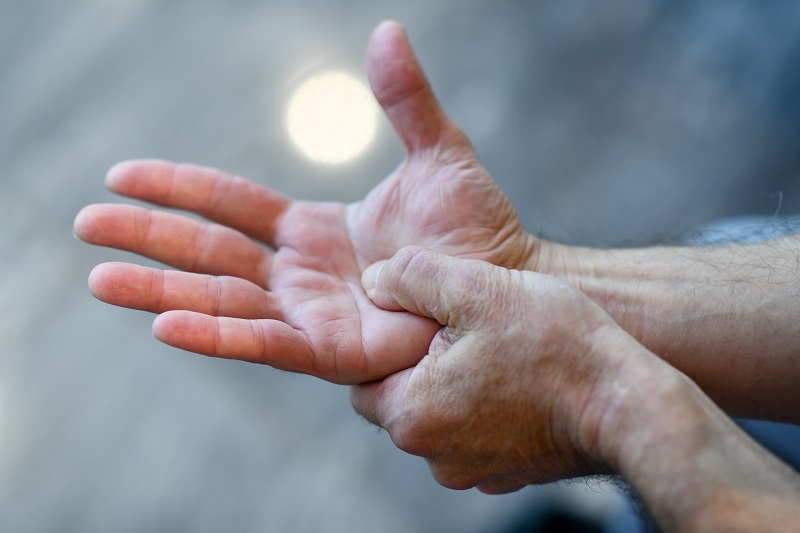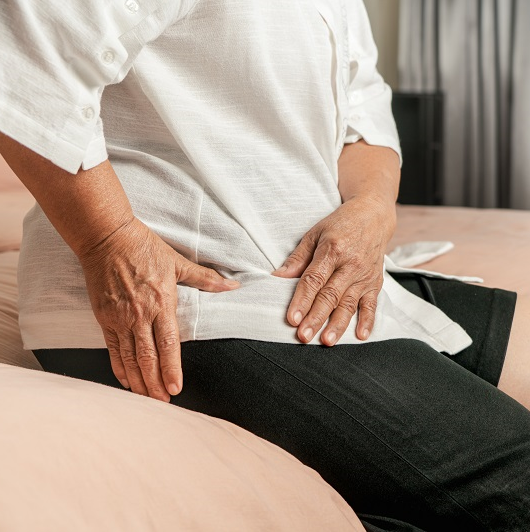3 Common Causes of Hand Pain Without Injury

August 09, 2023
Updated December 2024
If you accidentally slam a door on your hand, it isn’t surprising when it hurts. But hand pain that arises with no known cause may be confusing.
There are several common causes of hand pain that aren’t associated with an injury or other condition. Paying close attention to symptoms or other clues may help you discover the exact cause of the pain.
“Not all hand pain feels exactly the same,” says hand surgeon, Christopher Doumas, M.D. “You may narrow down its origin by analyzing the pain and its risk factors.”
Common Causes Of Hand Pain
There are different reasons why you may experience hand pain without an injury.
Three common causes include:
- Arthritis
- Carpal tunnel syndrome
- Trigger finger, or stenosing tenosynovitis
Read on to find out how each condition may cause hand pain or discomfort.
Arthritis Pain
Joint pain due to inflammation may cause arthritis anywhere, including within the hands. The two most common types of arthritis are osteoarthritis and rheumatoid arthritis.
- Osteoarthritis, commonly associated with aging, leads to pain because joint cartilage wears down. Without cartilage cushioning the joints, bone may rub on bone, causing painful inflammation.
- Rheumatoid arthritis, an autoimmune disease, causes pain because tissue lining the joints become inflamed.
People with arthritis may experience pain when they:
- Bend or straighten their fingers
- Perform repetitive motions
- Grasp an object tightly
- Spend time outside during cold weather
Possible treatments include:
- Oral medication or injections, which may help relieve arthritis pain
- A splint, which may let the hand joints rest
- Keeping the hands active, which may help to prevent stiffness, inflammation and additional pain
- Physical therapy, which may help to improve joint flexibility and range of motion
- Surgery may be necessary in some cases, if other treatments aren’t effective
Carpal Tunnel Syndrome
The numbness and discomfort associated with carpal tunnel syndrome often affects the hands. Repetitive hand motions, awkward sleep positions or wrist trauma may cause this problem.
Within the wrist, there’s a narrow passageway known as the carpal tunnel. This tunnel houses a nerve that provides sensation to the hand.
When inflammation or injury narrows the carpal tunnel, it compresses the nerve, causing symptoms. People may have carpal tunnel syndrome in one or both hands.
People with carpal tunnel syndrome may experience hand discomfort such as:
- Pain, which may worsen at night
- Numbness
- Tingling
- A burning sensation
- Muscle weakness, when grasping objects
- Swollen fingers
Possible treatments for carpal tunnel syndrome include:
- Oral or injectable anti-inflammatory medication, to reduce swelling
- Wearing a splint, to keep the wrist in a neutral position
- Adopting ergonomic changes, to avoid making repetitive movements that lead to wrist inflammation
- Physical therapy, to learn how to stretch and exercise the wrists and hands
- Surgery, as needed, to widen the carpal tunnel, eliminating nerve compression
Trigger Finger
Trigger finger, or formally known as stenosing tenosynovitis, is a condition where a thumb or finger becomes stuck in a bent position, and then suddenly snaps back to straight – perhaps named after the motion of pulling a trigger and then releasing.
“There are tendons that control your finger’s movement, and trigger finger happens when those tendons become inflamed and those pathways narrow,” says Dr. Doumas.
Symptoms of trigger finger can include:
- Stiffness or stiffness in the affected finger
- Popping or clicking when moving the affected finger
- Difficulty extending or flexing the affected finger
“It’s important to seek treatment for trigger finger, as leaving it untreated can lead to permanent stiffness or difficulty using that finger,” says Dr. Doumas. “Your treatment will depend on the severity of the condition – sometimes rest, splinting and over-the-counter pain relievers do the trick, but more severe cases could require steroid injections.”
Next Steps & Resources:
- Meet our source: Christopher Doumas, M.D.
- To make an appointment with Dr. Doumas, or a doctor near you, call 800-822-8905 or visit our website.
The material provided through HealthU is intended to be used as general information only and should not replace the advice of your physician. Always consult your physician for individual care.







